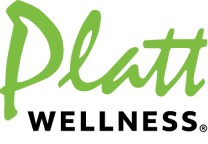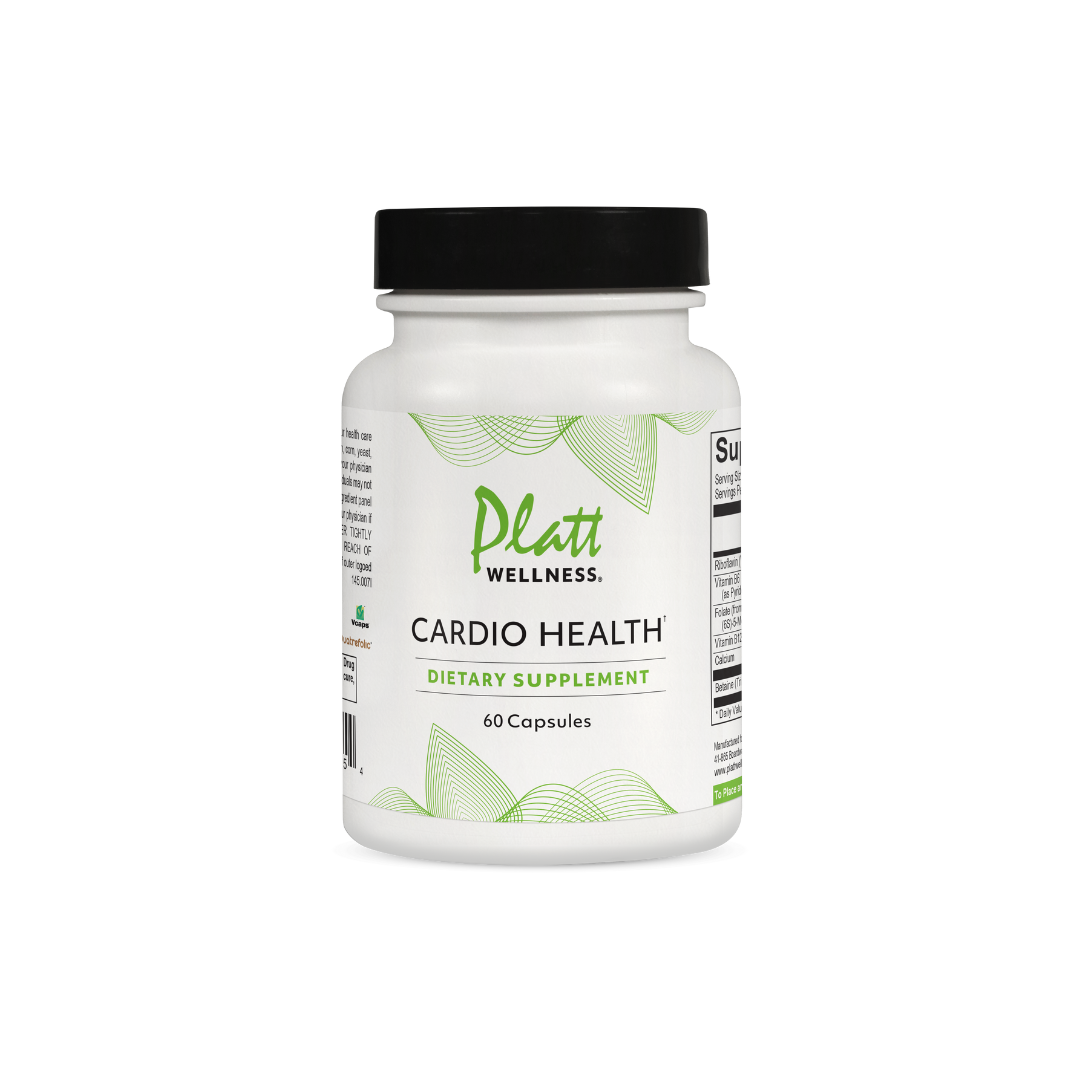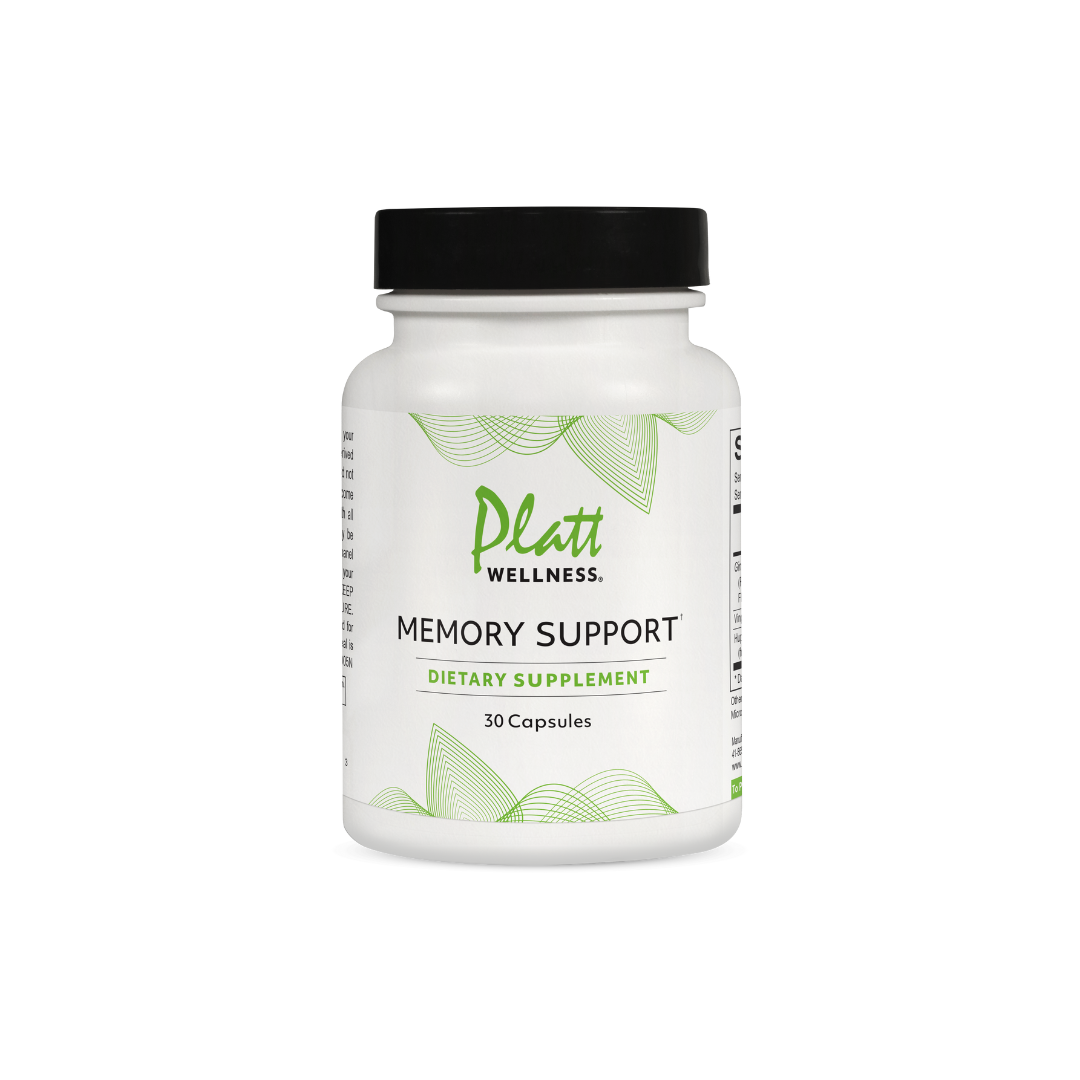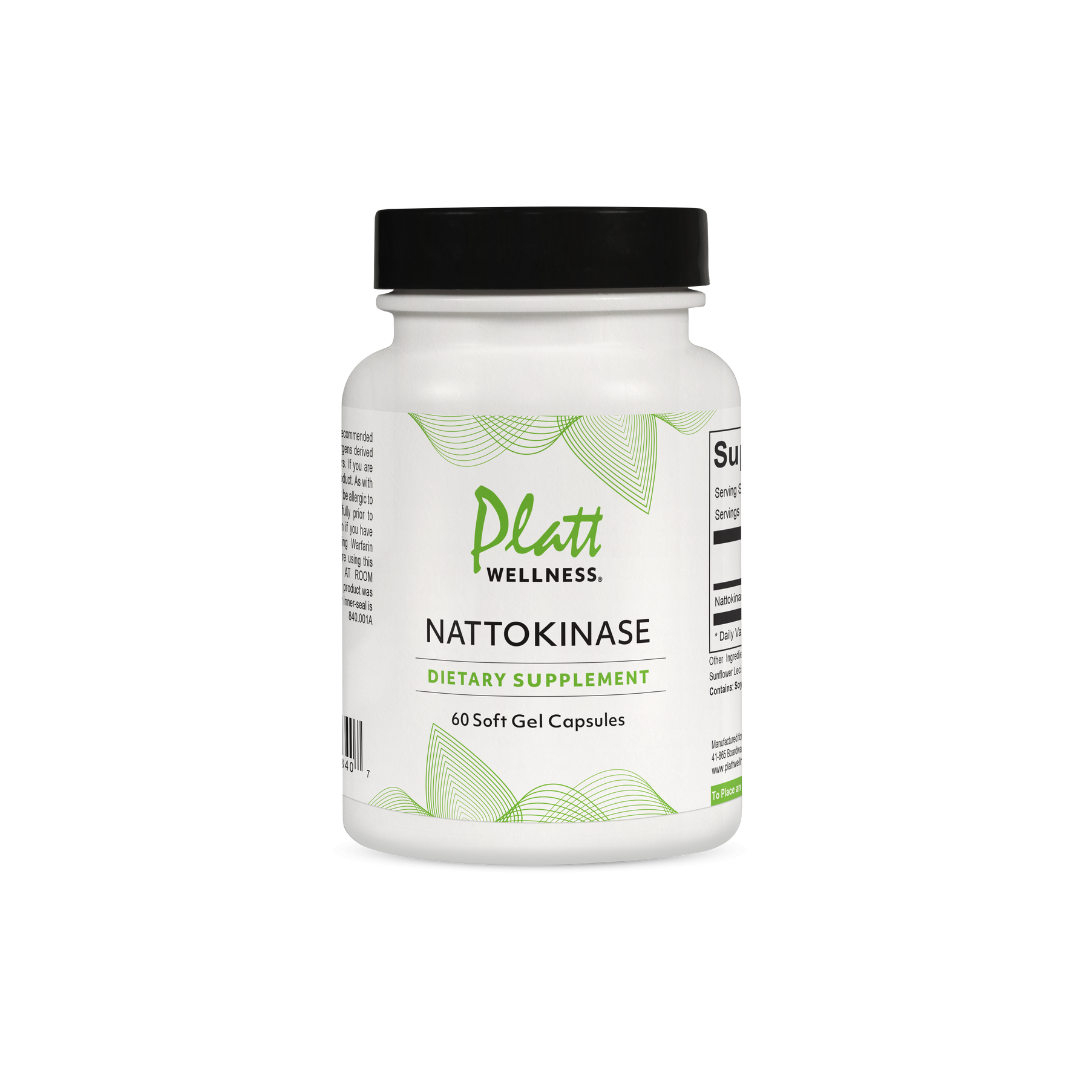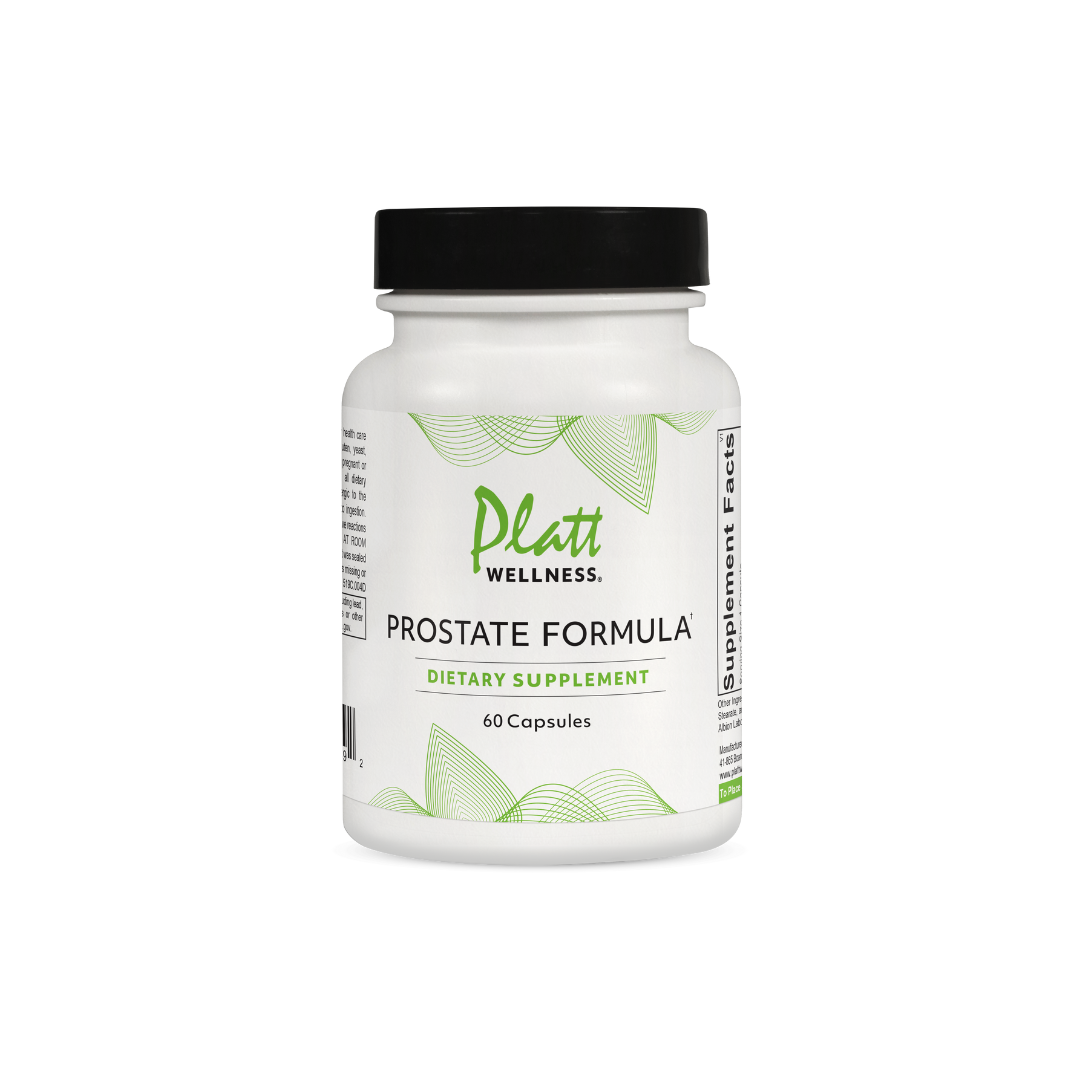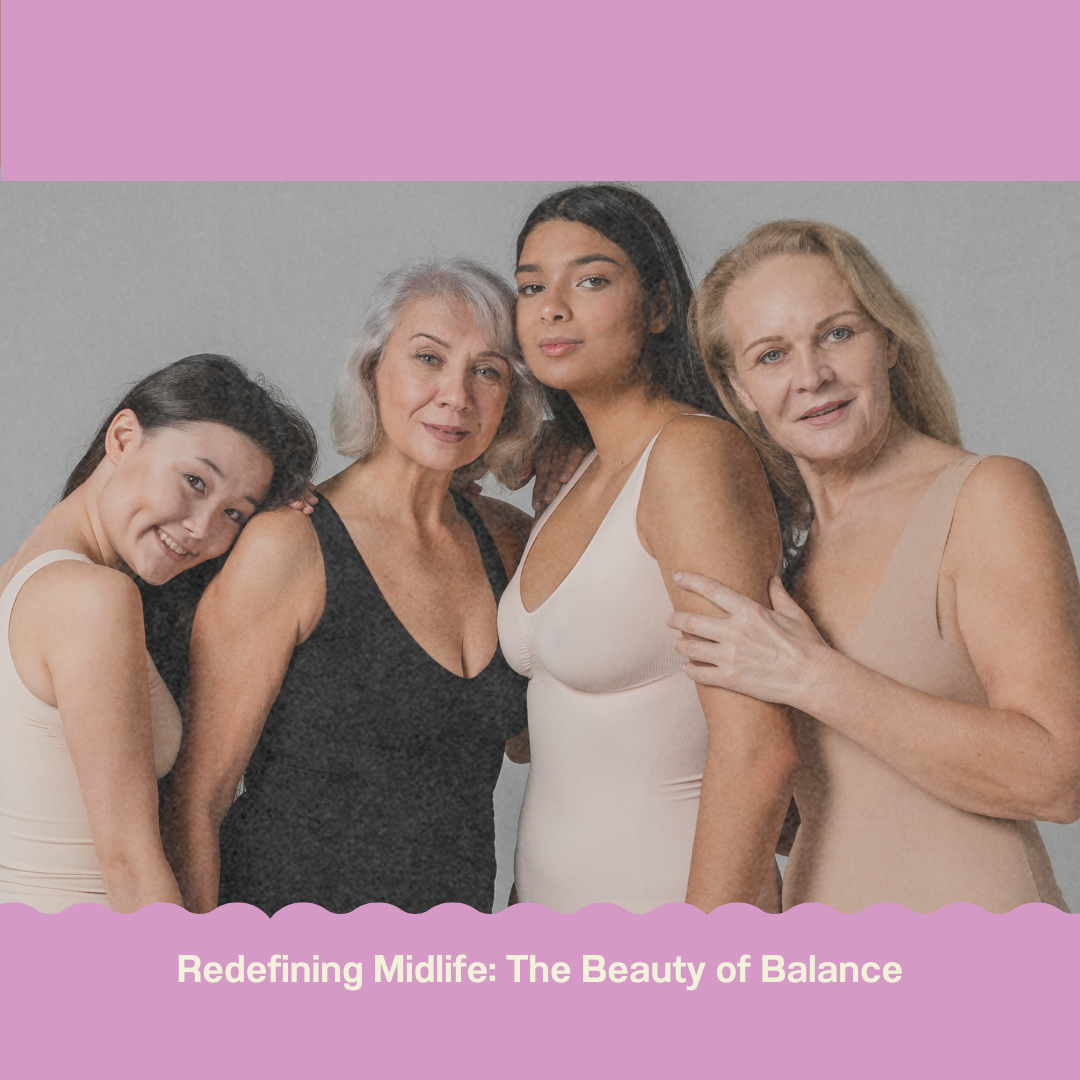Dr. Michael Platt, in his research on adrenaline, explores the relationship between this powerful hormone and anxiety and stress. His solution to this is novel, and may indeed help many of us initiate the process of reversing the overproduction of adrenaline in our bodies.
In Dr. Platt's book "Adrenaline Dominance - A Revolutionary Approach to Wellness" he maintains that the underlying cause of many illnesses could very well be excess adrenaline in the body. He suggests that many conditions can be eliminated without the use of toxic medications and offers nutritional and bio-identical hormone solutions to help stop the cycle of adrenaline dominance.
Overcoming Adrenaline Dominance: A Healthy Approach to Getting Well
In this article, I will be introducing a revolutionary approach to treating many illnesses by addressing their underlying cause. But first, a little background. Similar to the majority of physicians in the United States, most of what I learned during my medical training was based on research provided by drug companies. By the time I finished my residency in internal medicine, I was convinced that no matter what a person's health problem might be, a drug was needed to treat it. All this changed when I discovered the world of bio-identical hormones.
Bio-identical hormones have a molecular structure identical to those of the hormones the human body produces. Manufactured by drug companies such as Pfizer and Upjohn, with implicit FDA approval, the powder is then formulated by compounding pharmacies into creams, pills, troches, or suppositories. Since they are natural, they cannot be patented, which is why we don't see drug companies enthusiastically endorsing them.
Because hormones control every system of the body, they have a significant effect on how the body functions. Hormones out of balance can be responsible for many illnesses. Utilizing bio-identical hormones as a form of treatment thus offers an effective alternative approach to wellness. This is not "alternative medicine"; it is traditional medicine using bio-identical hormones, which have been in existence for over eighty years.
Over time, as I helped patients get better using this approach, I came to recognize certain similar symptoms associated with a variety of disorders. Many of these symptoms were related to an excess of one particular hormone, namely, adrenaline—which led to my identification of a condition I call "adrenaline dominance." At the same time, I discovered that bioidentical progesterone offers a natural, healthy, and effective way to help reduce excess adrenaline and also block its effects. When we address the cause (i.e., high levels of adrenaline) rather than the symptoms, many conditions can be eliminated, along with the medications used to treat them.
Above all, I want to let patients who are struggling with never-ending health issues know there is a healthier approach to getting well. Second, I want to share what I have learned with other healthcare practitioners who are looking for more effective treatment options and thereby possibly change, one by one, how physicians practice medicine. Hopefully, this approach will help reinstate the goals many of us physicians had upon entering medical school, which were to help sick people get well and to help well people stay well. I also hope it will reinvigorate the faith in medicine that patients had when doctors were highly respected.
“The U.S. healthcare system is a multi-trillion-dollar-a-year industry that thrives on illness, not wellness”
How Physicians Practice Medicine
To appreciate why the current approach to treating patients is substandard and needs to change, we must begin by addressing the status of healthcare in our country. Today, physicians and patients alike have lost faith in the U.S. healthcare system, which has become a national disgrace. Even though the U.S. spends more money per capita on healthcare than any other developed country, we have the highest incidence of diabetes, obesity, heart attacks, cancer, and infant mortality among all industrialized nations.
The US healthcare system is a multi-trillion-dollar-a-year industry thriving mostly on illness, not wellness. And the beneficiaries are not patients but rather drug companies, as well as hospitals and providers of medical services and equipment.
The ancillary businesses involved with medical care provide millions of jobs and generate billions of dollars in tax revenues to state and federal governments through the sale of medical supplies. It is any wonder that the incentive to change this system is in short supply?
Not well publicized is the fact that healthcare is the number one budgetary item in most states. We can add to that the cost of Medicare, which is becoming an insurmountable financial burden for the federal government.
Drug companies, who benefit the most from today’s U.S. healthcare system, greatly influence how physicians practice. Research conducted by these companies provides the basis for much of the content taught in medical schools, and many doctors are only comfortable making medical choices when a drug company gives them direction. For example, many doctors never recommend supplemental CoQ10 when their patients are taking statin drugs because drug companies do not recommend it. However, statin drugs prevent the production of CoQ10, which is essential for the function of muscles, including those of the heart. With little or no CoQ10 in the body, muscle pain and even sudden death can occur.
Primary care physicians have traditionally formed the backbone of the medical field. Yet a recent poll of primary care providers indicated that, given the chance to do it again, 80 percent of them would not choose to go to medical school. Every year, few medical students elect to go into primary care. The reasons are multiple: long hours, heavy patient loads and dissatisfaction with primary care reimbursement compared to that of other specialities.
Another factor contributing to the decline of primary care medicine may be the absence of tools needed to get patients truly well. If primary care practitioners were actually able to eliminate their patients’ problems, they would receive positive reinforcement from a multitude of grateful patients. Instead, they are taught to prescribe drugs to lower blood pressure, drugs to reduce blood sugar, antidepressants, sleeping pills, pain medications, plus others that simply help patients cope with their ailments.
As you will see, many of the problems for which drugs are prescribed are associated with excess adrenaline, which traditionally has never been considered as an underlying cause. This connection calls into question many time-honored approaches to medicine. I am proposing an approach that looks at causes rather than symptoms. At the same time I am suggesting that many conditions regarded as incurable can be eliminated without the use of medications, which often can be toxic.
In essence, I am proposing the use of bio-identical hormones to treat hormone imbalances (such as excess adrenaline) along with the use of the two nutrients the brain requires as treatment.
This approach to practicing medicine stands to provide greater satisfaction to both patient and doctor. Doctors who rely primarily on guidance from drug companies will have to accept that their patients will rarely, if ever, get cured. (The only drugs that actually cure anything are antibiotics.) On the other hand, one of the rewards of this approach is the frequency with which patients will say “Doc, in my entire life I've never felt so good.”
The ideas presented here are derived via the same means that many other advances have been achieved throughout medical history: observation followed by evidence to support that observation. Alexander Fleming's initial discovery of penicillin, for instance, was purely observational; it took years for research to reveal how and why penicillin works.
“Getting patients well should be the bottom line, whether or not journal articles have been published to support a particular protocol.”
New ideas in medicine rarely become publicized because "experts” in charge of physician education have denigrated observation-based medicine to the category of anecdotal—that is, having no credibility—a situation that has halted important progress in medicine over the last fifty years. With this background, it should be apparent that there is something missing from our approach to healthcare. Which brings us to the subject of this article, namely, adrenaline dominance. This is a subject that represents a significant void in physician education.
To address this void, my book, Adrenaline Dominance, discusses the role and function of adrenaline in the body and the basics of treating adrenaline dominance. It describes the "good,” the “bad," and the ugly" effects of excess adrenaline. I consider the “good” aspect Attention Deficit Hyperactivity Disorder (ADHD) since it is associated with heightened intelligence, creativity, and energy; many famous high-achieving people have ADHD. The “bad” aspects of excess adrenaline include medical conditions that are more or less manageable. The “ugly' category involves conditions that significantly impact quality of life. A person with excess adrenaline will often have symptoms or conditions that fall into more than one of these categories. By reducing their excess adrenaline they can experience primarily the “good” aspect of the hormone.
What Is Adrenaline Dominance?
Many conditions are related to excess adrenaline. Consider for a moment the following three cases:
Case I: A fifty-eight-year-old man, the CEO of a software company, comes to see his doctor complaining of trouble falling asleep. He tosses and turns through the night. When he finally falls asleep, he grinds his teeth. He is on high blood pressure medication and an antidepressant. He has a tendency to drink more alcohol than he should. When sitting, one knee often twitches up and down involuntarily. His wife tells him that during the night his legs move constantly. At work he has trouble focusing and is often forgetful. As a student he had never opened a book until the night before an exam, and he eventually developed a Type A personality.
Case II: A forty-two-year-old woman has severe mood swings and anger issues that she experiences ten days a month. She often wakes up around 2:30a or 3:00a in the morning and lies awake for several hours before getting up. She reports a problem with bladder pain and burning when she urinates. She gets shaky and irritable if she goes too long without eating. A stay-at-home mom, she is homeschooling her two children, who have both been diagnosed with ADHD and, at ages eight and ten, are still wetting their beds. During her second pregnancy, she vomited the entire nine months.
Case III: A fifty-year-old woman who is currently on disability complains of persistent fatigue. She awakens in the mornings with pain in her lower back and along the sides of her hips. She has occasional episodes of road rage. She is unable to lose the forty-two pounds of excess weight she carries. She has persistent constipation, chronic headaches, and has been diagnosed with an anxiety/depression disorder. Her thirty-year-old son has been diagnosed with bipolar disorder. She is on nine different medications, including one for diabetes.
These patients' complaints and concerns are problems doctors deal with on a daily basis. Between them, the three patients are presenting symptoms of the following conditions, some of which are considered incurable:
• ADHD (attention deficit hyperactivity disorder)
• Fibromyalgia
• Depression/anxiety
• Severe anger
• PMDD (premenstrual dysphoric disorder)
• IBS (irritable bowel syndrome)
• Chronic interstitial cystitis (inflammatory condition of the
bladder)
• Alcoholism
• RLS (restless leg syndrome)
• Insomnia
• Hyperemesis gravidarum (intractable nausea, vomiting, and dehydration during pregnancy)
Interestingly, all these conditions are caused by an excess of adrenaline.
I refer to excess adrenaline, or hyperadrenalism, as "adrenaline dominance." It is somewhat comparable to "estrogen dominance," a term coined by John Lee, MD, to describe the signs and symptoms of excess estrogen. It is caused by an imbalance of estrogen and progesterone, and can lead to conditions such as PMS, fibroids, and even cancer. The treatment, of course, is to provide progesterone.
Adrenaline dominance also results in a variety of medical conditions whereby the addition of progesterone can provide the needed balance. Notably, the cause for most of the conditions resulting from adrenaline dominance have not been identified by modern medicine. In my many years of working with patients, I have found that by using a treatment designed to target and reduce excess adrenaline, a high percentage of my patients have been relieved of their symptoms and regained normal health.
Adrenaline is considered a “survival hormone.” Large amounts of it are released when the body faces a threat of some kind. Adrenaline triggers the fight-or-flight response, which mobilizes the body’s resources for immediate physical action.
Adrenaline increases the sugar level in the blood and directs this energy-rich blood to the muscles so they can fight harder or flee faster, and also to the brain, which needs to be highly alert. Simultaneously, however, adrenaline constricts blood vessels that supply organs such as the intestines that are not needed for survival. This is actually the cause of IBS. Adrenaline also causes the pupils to dilate, speeds the heart rate, causes cold hands and feet, as well as a dry mouth.
Through the millennia, humans have drawn upon adrenaline to fight wars and deal with other dangers - real or imaginary. But now that we are in the twenty-first century, fewer people face life-threatening danger on a regular basis. A high level of adrenaline is obviously needed in some activities, such as the military, law enforcement, and sports. However, many people are putting out high levels of adrenaline all day and all night, even though they’re not in danger or involved in the prior mentioned activities.
Modern day life produces continuous low-level stressors in a way that is unique in human history. We are barraged by noise, too long a commute, family issues, getting burned out at work, getting too little sleep, financial concerns, no time to relax, worries about elderly parents who may be ill, problems with the kids, moving, a job transition, loss of a loved one, and other issues. Even though none of these stressors are life threatening, the body often responds to them by producing adrenaline. However, these scenarios are only a minor cause of the symptoms of adrenaline dominance. The major cause will be addressed shortly.
Excess adrenaline tends to create anger, a useful emotion when confronting a wild animal or an enemy combatant. Now, however, adrenaline-caused anger shows up as road rage or as an expression of violence reported daily in the news. Because of its frequency, it is common for people to internalize this anger, which can lead to a number of serious conditions including depression.
How Adrenaline Works
To understand the effects of adrenaline dominance, we need to have a basic understanding of adrenaline’s roles and functions in the body. Adrenaline is produced by the adrenal medulla, the interior part of the adrenal gland. It functions both as a hormone, controlling the activity of various tissues in the body, and also as a neurotransmitter in the brain.
The body produces large amounts of adrenaline in two situations where survival may be an issue. One situation is when the body is under stress. This stress can either involve physical danger—such as being mugged or running from a bear—or emotional tension—like competitive sports, going on stage, giving a speech, being late for work, gambling, a first date, or a medical exam. In either instance, the heart rate, blood pressure, and sugar level in the blood all rise, blood flow to the brain and muscles increases, while blood flow to organs not essential to the fight-or-flight response, such as the gastrointestinal tract and the kidneys, is reduced.
The second situation that causes the release of adrenaline is when the brain is not getting enough sugar in the form of glucose, which is one of the brain's primary sources of energy. In this situation, the body will produce sugar from protein through gluconeogenesis, a process mediated by adrenaline. I suspect that this is the primary reason for all the problems related to increased adrenaline. The brain actually uses more sugar (glucose) than any other tissue in the body. When sugar is taken away from it, the brain falls asleep, a condition commonly known as hypoglycemia or, in extreme cases, narcolepsy. From a survival standpoint, the body will always ensure that the brain has enough fuel to be awake and alert, and it will release adrenaline in order to accomplish this. An example of how this survival mechanism works is when it is used to prevent people from falling asleep while driving. It enables them to avoid going off the road, hitting a tree, and killing themselves.
Many times in the past I have slapped my face while driving, trying to keep awake. It usually took seven to ten minutes to wake up, which is a long time to wait while trying to avoid going off the road. I realize now that what awakened me was not the slapping but the gluconeogenesis via adrenaline that raised my sugar level, allowing me to become more alert.
Besides initiating the body's own production of sugar, hypoglycemia also stimulates a craving for foods high in sugar. High-sugar foods (such as candy, soda, cake, and cookies) are human made, not natural, so the body is not designed to handle them well. Consumption of foods high in sugar stimulates an outpouring of insulin, the hormone whose primary function is to regulate the sugar level in the blood.
One of the ways insulin reduces blood sugar is by forcing sugar into muscle cells and fat cells. The higher the sugar level in the blood, the more insulin is released. As the excess insulin pushes the excess sugar into the cells, it can precipitate another drop in the sugar level, which prompts another release of adrenaline—a sequence that can continue cyclically. This close relationship between adrenaline and insulin is a key factor in a number of health conditions, including hypertension, diabetes, unexplained weight gain, and the metabolic
syndrome, or syndrome X.
Under the conditions for which adrenaline was originally designed, all or most of the elevated blood sugar would have been burned up during the fight-or-flight response. Insulin was only needed to take care of small levels of sugar that were left over. However, nowadays, because of continuous low-level stress, ongoing excess adrenaline, and not enough activity to use up the sugar, much of the sugar is not burned up. So insulin moves this extra sugar into fat cells, where it is turned into fat.
As an example, because people in law enforcement tend to have higher levels of adrenaline they may be especially prone to getting caught in the adrenaline-sugar insulin cycle. They famously have cravings for sugar (doughnuts), the consumption of which produces a lot of insulin, with resultant hypoglycemia and possible weight gain. A 2011 study, published in the Journal of the American Medical Association looked at sleep disorders affecting 5,000 police officers. The study found that 50 percent admitted to nodding off at frequent intervals while driving. These same officers were also more prone to uncontrollable anger and to committing safety violations. I suspect there may be similar issues among truck drivers who continuously fight sleepiness by eating Hostess Twinkies and taking NoDoz. Bus drivers, train engineers, and airline pilots may also be at risk for hypoglycemia - another public safety issue to consider. Insulin is a hormone we cannot live without. However, I would not describe insulin as a “happy” hormone. Insulin is:
- The number one hormone that creates fat around the middle
- A major cause of elevated blood pressure
- The hormone that speeds up the aging process through a process called glycation
- Very likely the primary cause of type II diabetes and most of the complications of diabetes
Stress can certainly stimulate the release of adrenaline. At the same time, increased adrenaline can make a person feel “stressed.” Consequently, whether adrenaline is directly stimulating the release of cortisol from the adrenal cortex or increased stress is stimulating the release of cortisol, the end result is an increase in cortisol. And one of cortisol's first functions is to increase the blood sugar level to deal with stress, via a process called glycogenolysis. So now there are two hormones raising blood sugar. Again, any time the sugar level rises, there is a concomitant increase in insulin to drive the sugar into cells, which can lead to hypoglycemia, which in turn prompts the body to release adrenaline and cortisol to raise the sugar level again in a cascade of hormones. It is extremely important to realize that adrenaline peaks at 2:30 am because the brain often runs out of fuel at that time. Subsequently, cortisol is released to deal with the stress, creating a situation where the body is releasing two hormones that raise sugar levels while people are lying in bed unable to burn up the sugar. I suspect that this may represent the number one cause of weight gain.
Cortisol, like adrenaline, is associated with increased fat around the waist because of its role in the cycle of sugar and insulin. It can also speed up osteoporosis—the same way the drug prednisone does. It also appears to have an adverse effect on the heart. High levels mean higher risk of coronary artery calcification as well as a higher number of plaques in the carotid arteries. In addition, it has an adverse effect on the immune system.
Cortisol is also an anti-thyroid hormone. This is actually a protective mechanism because adrenaline is a stimulant and so is the thyroid hormone. When people have excess adrenaline, they do not tolerate thyroid. So cortisol prevents T4 from converting into T3 which is the active thyroid hormone. It also causes T3 to convert into reverse T3 which has no activity. Excess cortisol can also promote thyroid resistance at thyroid receptor sites, an adverse effect that can contribute to weight gain. Too much cortisol also impacts the pituitary gland, where it suppresses the production of thyroid-stimulating hormone as well as growth hormone.
The treatment programs presented here and in my book help normalize the levels of not just adrenaline but also insulin and cortisol -- the three major hormones associated with stress. After the lowering of adrenaline levels, the underactive thyroid situation can be addressed.
Treating Adrenaline Dominance
The following is an overview of the adrenaline-reducing protocol I recommend; a chapter in my book discusses the specifics of treatment in more detail. I am unaware of any other source in the medical literature that explains how to lower adrenaline.
Since stress can cause excess adrenaline, anything that reduces stress is obviously useful in lowering adrenaline. Well-known stress reducers include meditation, strenuous exercise, and deep breathing. Certain herbs, such as theanine, ashwagandha, and rhodiola, can also reduce stress. These practices and herbs can help block the effects of excess adrenaline. However, they do not directly address the reason why the body is producing excess adrenaline.
Successfully managing excess adrenaline requires treating the most common reason it occurs -- a brain hungry for fuel. This is best achieved by following an appropriate meal plan. In addition to providing the fuel the brain requires, the next component is the use of a bio-identical hormone cream to block adrenaline.This combined approach usually brings about a significant drop in adrenaline within twenty-four hours, along with the elimination of many, if not all, of the patient’s symptoms.
A Nutritional Approach to Reducing Excess Adrenaline
The nutritional aspect of my protocol for managing adrenaline focuses on the fact that hypoglycemia, or low sugar level in the brain, stimulates the production of adrenaline. To supply the brain with fuel, the body will, if needed, synthesize sugar from protein through metabolic pathways that involve adrenaline.
The brain can be low in sugar for two reasons. One is the overproduction of insulin, which causes the blood sugar level to drop. The body produces the most insulin after eating and also in midafternoon. People who get sleepy after eating or between 3pm and 4pm will likely release adrenaline at this time to counteract the drop in sugar.
The second reason the brain can be low in sugar is that the person is not eating correctly. A key principle in my nutritional approach to controlling adrenaline is to eat low-glycemic rather than high-glycemic carbohydrates. The glycemic index rates foods (mostly carbohydrates) according to how quickly or slowly they are digested. High-glycemic foods are digested more quickly, so sugar is released into the bloodstream rapidly. Low-glycemic foods are digested more slowly and release sugar more steadily. The bottom line is that high-glycemic foods stimulate the production of more insulin.
"Without the proper nutrition to keep the blood sugar level steady, people may find themselves ‘living on adrenaline.’”
High-glycemic carbohydrates are primarily refined carbohydrates, such as white rice, white bread, sugar of all kinds, corn, and bananas. They cause a quick rise in blood glucose (sugar) that stimulates the release of large amounts of insulin, which then leads to hypoglycemia and, subsequently, production of adrenaline. Low-glycemic carbohydrates cause a smaller, slower rise in glucose in the blood and do not stimulate as much insulin release. Types of low-glycemic carbohydrates include green vegetables, certain starchy vegetables, unprocessed grains, and legumes.
Among these types, green vegetables provide the perfect sugar for the brain. They can be consumed in a vegetable omelet or in scrambled eggs, added to a green smoothie or a salad. The other fuel the brain requires are ketones. They are best obtained from coconut oil and MCT oil.
The importance of eating correctly to manage adrenaline should not be underestimated. Without the proper nutrition to keep the blood sugar level steady, people may find themselves "living on adrenaline" as the body continuously releases adrenaline in order to manufacture its own sugar so the body and brain can have sufficient fuel. People who skip breakfast or only eat once a day are probably in this category.
Adrenaline also takes away the appetite. Those who put out adrenaline during the night may find they have no appetite in the morning.
There is no one-size-fits-all approach to how people with excess adrenaline should be eating. Any recommended meal plan should simply be considered a set of guidelines to be fine-tuned to suit each person.
Coconut Oil Fuels the Brain
During digestion, medium chain triglycerides (MCTs) found in coconut oil, are broken down into medium chain fatty acids, some of which are converted into ketones. Nerve tissue, including the brain, relies on glucose for energy. In addition, nerve cells can also convert ketones into energy. When food is restricted and adequate glucose is unavailable, the body converts fat into ketones, which supplies the brain with the energy it needs to function properly.
Glucose cannot enter cells without the aid of insulin. Insulin is a hormone that takes glucose from the bloodstream and shuttles it into the cells. Certain conditions, such as chronic inflammation, can cause cells to become insulin resistant. In insulin resistance, insulin receptors do not function properly and cannot adequately transport glucose into the cells. When inflammation affects nerve tissue, nerve cells become insulin resistant. Therefore, the brain is unable to get the glucose it needs and nerve cells degenerate and die, leading to problems such as Type III diabetes, also known as a precursor to Alzheimer’s.
Ketones do not require the aid of insulin to pass through cell membranes. Therefore, they can supply brain cells with needed energy regardless of insulin status. Brains that are starving for nourishment can get the energy they need from ketones the body manufactures from coconut or MCT oil.
A Hormonal Approach to Reducing Excess Adrenaline
Only one hormone is needed to help control adrenaline: progesterone. Progesterone is best applied in the form of a bioidentical transdermal cream, available by prescription from a compounding pharmacy or obtained OTC without a prescription.
Progesterone provides a two-pronged approach for managing excess adrenaline: it reduces the secretion of adrenaline by preventing insulin-induced hypoglycemia and it appears to directly block the effects of adrenaline. I am not aware of the physiological pathways by which progesterone affects insulin, since there are no studies delineating this. I suspect it blocks insulin at insulin receptor sites, or it might possibly affect the release of insulin by the beta cells of the pancreas. However, I am convinced of its significant effect on insulin based on feedback from thousands of patients as well as my own experience using it. Patients who use progesterone correctly no longer experience hypoglycemic sleepiness caused by high insulin, most commonly noted after eating, between 3:00 and 4:00 in the afternoon, or while traveling in a car as the driver or passenger. In addition, they often experience weight loss. As the episodes of hypoglycemia become fewer, the production of adrenaline to counteract hypoglycemia also drops. Less adrenaline means less sugar is produced, and thus also less insulin.
Progesterone seems to directly counteract adrenaline's effects most dramatically in patients whose level of adrenaline is especially high. Sitting in my office, they often remark on how much better they feel less than three minutes after applying progesterone cream for the first time. Their leg tapping disappeared, they sat back in their chair, they felt more relaxed, and they were able to focus better.
Besides helping to control insulin and blocking adrenaline, progesterone has other positive effects on the body, including blocking the effects of excess estrogen in women. Excess estrogen can have harmful side effects such as cramps, PMS, breast tenderness, and migraine headaches. Over time, estrogen dominance can lead to fibroids, endometriosis, polycystic ovarian syndrome, asthma, and gallbladder disease, and can be the cause of six different cancers in women, especially breast cancer. All women on birth control pills are estrogen dominant because the pill prevents ovulation, so they no longer produce progesterone. Morning sickness during a woman's first trimester is another effect of estrogen dominance.
When prescribing progesterone, it is important to remember that bioidentical progesterone is not the same as a progestin such as Provera, which is not bio-identical and has the same adverse side effects as estrogen. In contrast, bio-identical progesterone appears to prevent every cancer that estrogen causes. A number of factors should be taken into consideration with regard to prescribing transdermal bio-identical progesterone cream:
1. There is no one-size-fits-all dosage. Rather, the patient begins with a generally recommended dosage and then adapts the amount, frequency of application, and even application site as needed. The initial dosing should always be 50 mg, the strength needed to block adrenaline. This is equal to one pump of a 5% cream.
2. It is better to adjust the dosage according to the patient's response rather than blood test results.
3. It is best applied to areas with a good blood supply and where the skin is thin—for example, the inner forearm, the upper chest, the back of the neck, or the face.
4. It appears to be extremely safe with few potential side effects.
5. Progesterone has a short half-life in the bloodstream (about five to six minutes) because of its propensity to attach readily to receptor sites.
6. Saliva tests give an extremely inaccurate picture of progesterone levels (except perhaps in people not using the transdermal cream).
7. Oral progesterone, which comes in capsules or troches, should be avoided. It goes straight to the liver, where it converts primarily into a different hormone called allopregnanolone. This hormone causes drowsiness, which is why oral progesterone is given at night.
This article is not a substitute for treatment prescribed by your physician. Any recommendations made in this article should be discussed with your physician, who can then order the necessary laboratory evaluations and follow your progress, making adjustments in your treatment as required.
DR. MICHAEL E. PLATT has been board-certified in internal medicine. He maintains a practice in Palm Desert, California, devoted to wellness and a preventive approach to illness. He is known nationally and internationally as a specialist in bio-identical hormones and for his innovative approach to natural hormone replacement. He is the author of The Miracle of Bio-Identical Hormones and Adrenaline Dominance. For more information, please visit Plattwellness.com, email Dr. Platt directly at questions@plattwellness.com, or phone 760-836-3232. His books, a meal plan to lower adrenaline, and a 5% progesterone cream are available on his website under the Adrenaline Dominance Bundle.
